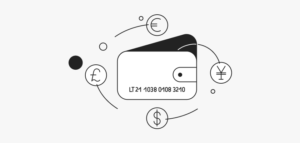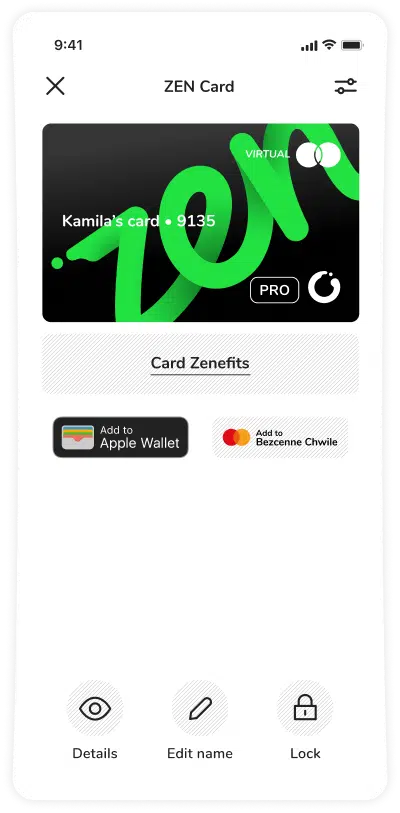What Are Payment Reversals and How to Avoid Them
Payment reversals are an umbrella term referring to any instance where transaction funds are returned to the cardholder’s account. For business owners, payment reversals can be a source of frustration as they often lead to extra fees and lost time and resources.
If you’re running an online store or business that accepts card payments, it can be helpful to understand how payment reversals work and what you can do to minimize them. In this article we discuss what payment reversals are, the different types of payment reversals, and what businesses can do to reduce their occurrence.
What is a payment reversal?
Payment reversals, also known as credit card reversals, are when funds from a transaction are returned to the cardholder’s bank. There are many different types of payment reversals and they can be initiated by customers, merchants, acquiring banks, issuing banks, or card networks.
Why do payments need to be reversed?
There are many reasons why a payment reversal may need to be initiated, including:
- Duplicate transactions
- Customer returning a product due to inaccurate or misleading descriptions
- Incorrect sum charged by the merchant
- Item going out of stock
- Customer change of mind
- Fraudulent claims (also known as chargeback fraud or friendly fraud).
Types of payment reversals
There are three main types of payment reversals that can occur at different stages of a transaction. The earlier in a transaction that a payment reversal happens, the easier it is to process. We describe each type of payment reversal below.
Authorization reversal
Authorization reversals happen when a previously authorized transaction is canceled before it has fully settled.
When a customer makes a purchase using a credit or debit card, the transaction is pre-authorized by the issuing bank. This is done to ensure that the customer has sufficient funds for the transaction. Since transactions aren’t always settled immediately after authorization, there is an interim period in which the transaction can be canceled by the merchant. This leads to a reversal of the initial authorization hold. This means that the funds that were set aside for the transaction become available again in the customer’s available balance, although it can take a few days for the reversal to reflect in the account
Authorization reversals can happen if a customer or merchant notices an error in their payment or delivery information, or if a merchant doesn’t finalize the purchase within a specific timeframe.
For merchants, authorization reversals are the most preferable type of payment reversal for a few reasons:
- Since they happen at the very beginning of a transaction process, they’re easier and faster to process than other reversals.
- They save businesses the fees that can be incurred with reversals that happen at a later stage in a transaction.
- Unlike reversals which happen after a transaction, they don’t complicate sales data with revenue that was lost.
- They provide a better experience for customers who want to cancel a transaction as the funds are released quickly.
Refund
After a transaction has been fully processed, it’s no longer possible for merchants to request an authorization reversal. At this stage, refunds need to be made.
A refund essentially reverses the initial transaction that took place. The refunded amount is sent from the merchant’s account back to the customer’s original payment method, such as credit card, digital wallet, or bank account. Like other transactions, refunds can take a few days to reflect in the customer’s account, however a return authorization can be used to assure customers that the credit has been added to their account.
Refunds are less preferable than authorization reversals as they carry a cost to the merchant. Usually this involves paying interchange fees on the credit transaction as well as covering the cost of shipping goods back from the customer.
Chargeback
Chargebacks are the least preferable type of payment reversal for merchants. These happen when a customer disputes a transaction through their bank or credit card issuer rather than directly with the merchant.
This is how chargebacks typically work:
- Dispute: Customers identify a transaction that they believe is incorrect, unauthorized, or fraudulent, or they have received a product that they believe is damaged or not as described.
- Bank contacted: The customer contacts their bank or credit card issuer and files a formal dispute, providing details and evidence to support their claim.
- Investigation: The card issuer or bank investigates the claim and may request further documentation from the merchant or customer.
- Temporary reversal: If the issuer decides to proceed with the chargeback, then funds related to the disputed transaction are temporarily reversed from the merchant’s account and credited back to the customer. Merchants will be notified and given the opportunity to dispute this with their own evidence.
- Resolution: Merchants can choose to accept the chargeback or contest it by providing evidence that the transaction was legitimate.
- Final decision: The issuing bank or credit card issuer will make a final decision and the customer will either keep the refunded amount or it will be returned to the merchant.
Customers can request chargebacks for several reasons, including:
- Not recognizing a transaction on their statement
- Item never arrived or wasn’t as described
- Being refused a refund from the merchant
- Suspicion of a fraudulent transaction
- Customer committing payment fraud.
Chargebacks exist to protect customers from merchant errors and fraudulent transactions, however they can negatively impact merchants. This includes lost revenue, payment of additional fees, and a potentially damaged reputation if chargebacks happen frequently. It can also be difficult for merchants to distinguish between a reasonable chargeback and a case of chargeback fraud. Additionally, merchants who incur frequent chargebacks can be flagged by card networks and, in some cases, no longer able to accept credit cards.
The best way for merchants to avoid repeated chargebacks is to provide clear and accurate transaction information, maintain a high standard of customer service, and resolve issues promptly to avoid escalation. Remaining aware and educated about potential cases of payment fraud, particularly chargeback fraud, can also be valuable for merchants.
The cost of payment reversals for businesses
Payment reversals are not easy for businesses and can have significant consequences. These include:
- Penalty fees: Chargebacks carry high penalty fees for merchants.
- Transaction costs: Despite reversing a payment, merchants still have to incur the cost of processing a transaction. This includes credit card processing fees and interchange rates, which they don’t get back.
- Damaged reputation: If merchants acquire frequent chargebacks, their payment processor will consider them risky. This can damage their reputation and they may lose their merchant account, significantly affecting business operations.
How to avoid payment reversals
Most businesses will have to deal with payment reversals, however there are some best practices and tools that can be used to minimize their occurrence.
Below are some steps that merchants can take to avoid payment reversals.
Populate billing information correctly
Payment reversals can sometimes be prevented by ensuring that billing information is accurate. During transactions, merchants should double check that billing details (e.g. address and payment information) are correctly populated before proceeding. Errors or discrepancies can lead to failed payments and potentially result in chargebacks.
Ensure payments are secure
Merchants should always prioritize secure payment methods and systems that comply with industry standard security protocols. This includes using encrypted payment gateways that are compliant with Payment Card Industry Data Security Standard (PCI DSS) to protect sensitive payment data from potential breaches or unauthorized access. This helps minimize cases of unauthorized transactions that can result in chargebacks.
Review transaction amounts
Human error plays a large part in why payment reversals happen. This can be avoided by carefully reviewing and verifying transaction amounts when processing payments. Accidentally overcharging or having incorrect billing amounts can lead to customer disputes and chargebacks.
Submit transaction data quickly
It’s good practice for merchants to submit transaction data as soon as possible after completing a transaction. Delayed or incomplete data submissions can lead to discrepancies and misunderstandings, potentially resulting in chargebacks due to incomplete or inaccurate transaction records.
Look out for fraud
Being aware of fraud and implementing fraud prevention measures can help merchants reduce payment reversals. These measures help ensure that the cardholder is the authorized user and prevent reversals from unauthorized transactions. Here are some ways merchants can implement fraud prevention tactics:
- Ensure a customer’s shipping address matches their billing address
- Analyze large or high value orders to check nothing seems suspicious
- Use security code verification and address verification systems at checkout.
Use transaction identifiers
Using transaction identifiers or unique codes for each transaction can help track and differentiate between transactions. This allows merchants to maintain accurate records, making it easier to identify and resolve potential issues.
Track and confirm projected clearing date
It’s good practice to monitor and confirm projected clearing dates for transactions. This information helps manage customer expectations and, if transactions are delayed, means businesses can take proactive action to keep customers informed and address potential disputes before they happen.
Use clear billing descriptors
It’s important to use clear and recognizable billing descriptors on customer statements. For example, YOURSHOPNAME instead of X8S877FFL. Clear descriptors help customers easily identify and recall transactions, reducing confusion and potential disputes that can arise from unrecognized charges.
Process authorization reversals quickly
When merchants receive an authorization reversal after a canceled or declined transaction, it’s essential to process it quickly. Failure to reverse them in a timely manner can result in pending charges, resulting in customer frustration and potential disputes.
Use incremental or estimated authorizations
When appropriate, it’s a good idea to use incremental or estimated authorizations. This approach involves initially authorizing a smaller or estimated amount to verify the payment method, minimizing the risk of declines due to insufficient funds or incorrect card information.
Research reversal trends
It can be helpful for businesses to regularly stay updated on trends in payment reversals and chargebacks. This allows them to stay informed on patterns or common reasons for reversals so that they can adapt their business with strategies, policies, and preventative measures to reduce future occurrences. Being aware of and educating employees on chargeback fraud can also be valuable.
A payment processor that supports merchants
For business owners, payment reversals are a reality that can’t be avoided. But by being aware of best practices and having the right process in places, their occurrence can be minimized and swiftly dealt with.
With ZEN Business, we aim to support both merchants and customers through the payment reversal process. We do this by ensuring a smooth transaction process and dedicated care in the event of refunds or chargebacks. With the lowest processing fees on the market, we also reduce the financial burden of payment reversals by helping merchants save on each transaction.
ZEN Business is the payment partner your store deserves. Apply now to discover a modern and responsive payment gateway designed with your business in mind.




